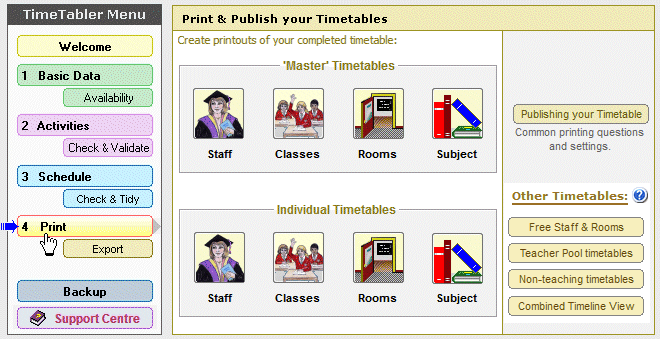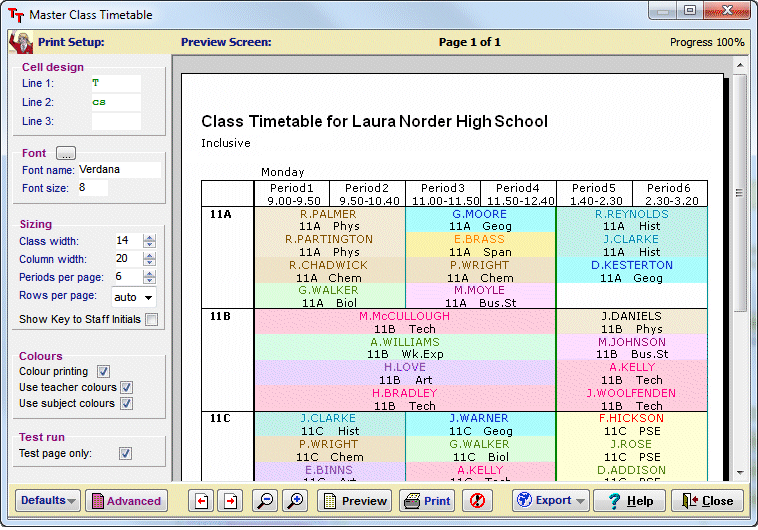Reading Ages of school Science text-books in the UK
This page shows the reading ages and ‘human interest’ scores of:
- Physics books for GCSE
- Chemistry books for GCSE
- Biology books for GCSE
- Science books for GCSE
- Science books for Key Stage 3
- A-level books
Before looking at these results, please consider the background to them, by reading the article on the Readability page.
Reading Ages results
Different tests can give slightly different results and so it is vital to take the average of several different readability formulae, and over several different sections of each book.
Do not be fooled by someone quoting either just one readability test that suits them, or a result for just one or two carefully-selected sections of text.
The ‘4F’ Method
I have used the ‘4F’ method, taking the averages of four tests: the Fry, FOG-Gunning, Flesch-Kincaid and Forcast tests.
All 4 tests are well-known, widely-used, and well-accepted. These 4 tests have each been applied to at least 8 sections in each book.
Although a large number of reading age tests have been applied to each book, the accuracy of the results should be viewed only as a guide, to the nearest year.
There are many additional factors to be used in judging the suitability of a text (see the web pages on Readability), including the human interest scores.
Human Interest Scores
For those concerned about the students’ personal responses to science, two human interest scores are shown for each book:
- A value A – E based on the number of illustrations in the first 100 pages that include one or more human faces. (‘A’ is >70 illustrations; ‘E’ is <10)
- A value a – e based on the number of personal pronouns (‘you’, ‘your’, ‘we’, etc) and names (Isaac Newton, etc) found in the first 20 pages. (‘a’ is >180; ‘e’ is <50)
Of course, since these scores are based on a number of pages (and the number of words per page varies) they are not truly comparable. But they do give some guide to the friendliness of the opening sections of the books.
Physics books
The table below shows the reading ages of British Physics books currently available for pupils in Key Stage 4 of the National Curriculum (for ages 14-16 years).
The ‘4F‘ reading age tests that were used (Fry, FOG-Gunning, Flesch-Kincaid, and Forcast) are described in the web page on Readability.
The same 8 topics from the national curriculum were used in each Physics book. ie. 32 tests per book.
The exceptions are the books marked** which did not contain all 8 topics.
Because the introductions to topics were used, this probably means that the results are minimum values!
Science books should have a reading age at least 2 years BELOW the reading age of the students, because :
- science books are usually used as ‘unsupported’ texts, for homework or revision, without direct teacher support, and,
- reading age tests are based on a comprehension level of only 50 per cent or less!
So if a book has a reading level of 14 years, an average 14-year-old would score only 50 per cent on a test of comprehension of that text.
50% is a long way from full comprehension!
| Reading Age (in years) | Author, Title of book, Publisher | ||
|---|---|---|---|
16 |
|||
15 |
Tom Duncan, GCSE Physics (John Murray) Graham Booth, GCSE Physics (Letts) John Avison, The World of Physics (Nelson)** Stephen Pople, Explaining Physics (Oxford)** K Foulds, Physics (John Murray) |
C D D C C |
d c d e c |
14 |
Shirley Parsons & Ian Pritchard, Physics (Collins) Robin Millar, Understanding Physics (Collins)** Dolan, Duffy & Percival, Higher Physics (Heinemann) Ken Dobson, Physics (Nelson Thornes) Ken Dobson, The Physical World (Nelson Thornes) David Brodie, Physics(Longman) Jim Breithaupt, Key Science:Physics (Nelson Thornes) Jim Breithaupt, N.Mod.Sci:Physics (Nelson Thornes) |
B B C C C B D D |
a a d b b a b b |
13 |
Jones, Jones & Marchington, Physics (Cambridge) Charles Tracy, Physical Processes (Hodder & Stoughton) Nick England, Physical Processes (Hodder & Stoughton) Nick England, Physics Matters (Hodder & Stoughton) |
D B C C |
a a a a |
12 |
David Sang, Foundation Physics (Heinemann) Stephen Pople & Peter Whitehead, Physics (Oxford) Keith Johnson, Physics for You (Nelson Thornes) |
B A A |
c d a |
ISBN details for these GCSE Physics books,
in the same reading age order as shown above:
| Tom Duncan, GCSE Physics (John Murray) Graham Booth, GCSE Physics (Letts) John Avison, The World of Physics (Nelson)** Stephen Pople, Explaining Physics (Oxford)** K Foulds, Physics (John Murray) Shirley Parsons & Ian Pritchard, Physics (Collins) Robin Millar, Understanding Physics (Collins)** Dolan, Duffy & Percival, Higher Physics (Heinemann) Ken Dobson, Physics (Nelson) Ken Dobson, The Physical World (Nelson Thornes) David Brodie, Physics (Longman) Jim Breithaupt, Key Science:Physics (Nelson Thornes) Jim Breithaupt, N.M.Physics (Nelson Thornes) Jones, Jones & Marchington, Physics (Cambridge) Charles Tracy, Physical Processes (Hodder & Stoughton) Nick England, Physical Processes (Hodder & Stoughton) Nick England, Physics Matters (Hodder & Stoughton) David Sang, Foundation Physics (Heinemann) Stephen Pople & Peter Whitehead, Physics (Oxford) Keith Johnson, Physics for You (Nelson Thornes) |
0-7195-5301-6 1-85758-567-4 0-17-438245-6 0-19-914272-6 0-7195-7159-6 0-00-322388-4 0-7135-2492-8 0-435-58001-9 0-17-438679-6 0-17-438699-0 0-582-27984-4 0-7487-1674-2 0-7487-2609-8 0-521-45945-1 0-340-65510-0 0-340-55432-0 0-340-63935-0 0-435-58005-1 0-19-914672-1 0-7487-6236-1 |
The books marked ** did not contain work on ‘The Earth & Beyond’.
Chemistry books
The table below shows the reading ages of British Chemistry books currently available for pupils in Key Stage 4 of the National Curriculum (for ages 14-16 years).
The ‘4F‘ reading age tests that were used (Fry, FOG-Gunning, Flesch-Kincaid, and Forcast) are described in the web page on Readability.
The introductions to 10 topics were used in each book. ie. 40 tests per book.
Because the introductions to topics were used, this probably means that the results are minimum values!
Science books should have a reading age at least 2 years BELOW the reading age of the students, because :
- Science books are usually used as ‘unsupported’ texts, for homework or revision, without direct teacher support, and,
- Reading age tests are based on a comprehension level of only 50 per cent or less!
So if a book has a reading level of 14 years, an average 14-year-old would score only 50 per cent on a test of comprehension of that text.
50% is a long way from full comprehension !
| Reading Age (in years) | Author, Title of book, Publisher | ||
|---|---|---|---|
17 |
|||
16 |
B. Earl & L. Wilford, GCSE Chemistry (John Murray) Jean McLean, Chemistry (Longman) |
D C |
d a |
15 |
Jane Morris, Chemistry (Collins) L.Wilford & B.Earl, Chemistry Double Award (J Murray) Graham Hill, Materials (Hodder & Stoughton) Philip Stone, Focus on Science (Hodder & Stoughton) Eileen Ramsden, Key Sci:Chemistry (Stanley Thornes) Graham Hill, Chemistry Counts (Hodder & Stoughton) T. Lister & J. Renshaw, Chemistry (Stanley Thornes) |
D C C D D C D |
e c d d b c c |
14 |
Martin Stirrup, Chemistry (Higher) (Heinemann) Bob McDuell, GCSE Chemistry (Letts) Renfrew & Conquest, S G Chemistry (Hodder & Stoughton) John Holman, The Material World (Nelson) John Holman, Chemistry (Nelson) |
C D E C C |
c d c a a |
13 |
Gallagher, Ingram & Whitehead, Chemistry (Oxford) R. Gallagher & P. Ingram, Chemistry (Oxford) Jones, Jones & Acaster, Chemistry (Cambridge) Bethell, Dexter, Griffiths, Chemistry (Found’n) (Heinemann) Lawrie Ryan, Chemistry for You (Nelson Thornes) |
C D E A A |
d d c b a |
12 |
ISBN details for these GCSE Chemistry books,
in the same reading age order as shown above:
| B. Earl & L. Wilford, GCSE Chemistry (John Murray) Jean McLean, Chemistry (Longman) Jane Morris, Chemistry (Collins) L.Wilford & B.Earl, Chemistry Double Award (J Murray) Graham Hill, Materials (Hodder & Stoughton) Philip Stone, Focus on Science (Hodder & Stoughton) Eileen Ramsden, Key Sci:Chemistry (Stanley Thornes) Graham Hill, Chemistry Counts (Hodder & Stoughton) T. Lister & J. Renshaw, Chemistry (Stanley Thornes) Martin Stirrup, Chemistry (Higher) (Heinemann) Bob McDuell, GCSE Chemistry (Letts) Renfrew & Conquest, S G Chemistry (Hodder & Stoughton) John Holman, The Material World (Nelson) John Holman, Chemistry (Nelson) Gallagher, Ingram & Whitehead, Chemistry (Oxford) R. Gallagher & P. Ingram, Chemistry (Oxford) Jones, Jones & Acaster, Chemistry (Cambridge) Bethell, Dexter, Griffiths, Chemistry (Found’n) (Heinemann) Lawrie Ryan, Chemistry for You (Nelson Thornes) |
0-7195-5303-2 0-582-27985-2 0-00-322386-8 0-7195-7158-8 0-340-55845-8 0-340-65508-9 0-7487-3009-5 0-340-63934-2 0-7487-2607-1 0-435-58002-7 1-85758-566-6 0-340-55590-4 0-17-438406-8 0-17-438678-8 0-19-914652-7 0-19-914316-1 0-521-55983-0 0-435-58003-5 0-7487-6234-5 |
Biology books
The table below shows the reading ages of British Biology books currently available for pupils in Key Stage 4 of the National Curriculum (for ages 14-16 years).
The ‘4F’ reading age tests that were used (Fry, FOG-Gunning, Flesch-Kincaid, and Forcast) are described in the web page on Readability.
The introductions to 10 topics were used in each book. ie. 40 tests per book.
Because the introductions to topics were used, this probably means that the results are minimum values!
Science books should have a reading age at least 2 years BELOW the reading age of the students, because:
- science books are usually used as ‘unsupported’ texts, for homework or revision, without direct teacher support, and,
- reading age tests are based on a comprehension level of only 50 per cent or less!
So if a book has a reading level of 14 years, an average 14-year-old would score only 50 per cent on a test of comprehension of that text.
50% is a long way from full comprehension!
| Reading Age (in years) | Author, Title of book, Publisher | ||
|---|---|---|---|
17 |
|||
16 |
James Torrance, S Grade Biology (Hodder & Stoughton) Gareth Price & Jane Taylor, GCSE Biology (Collins) |
E D |
e e |
15 |
D.G.Mackean, GCSE Biology (John Murray) David Applin, Key Science:Biology (Stanley Thornes) |
E D |
e d |
14 |
R. Fosbery & J. McLean, Biology (Higher) (Heinemann) David Applin, N.Mod.Sci:Biology (Stanley Thornes) Mary Jones & Geoff Jones, Biology (Cambridge) Terry Parkin & John Simpkins, Biology (Longman) Mary Jones & Geoff Jones, Biology (Coord) (Cambridge) David Baylis, GCSE Biology (Letts) |
C D E C C D |
c a c a d d |
13 |
J. Sears & S. Taylor, Life & Living (Hodder & Stoughton) Jane Vellacott, Life & Living (Hodder & Stoughton) S. Gater & V. Wood-Robinson, Biology (John Murray) M.B.V. Roberts, Biology for Life (Nelson) |
D C C D |
d d a a |
12 |
Michael Roberts, Biology (Nelson) Michael Roberts, The Living World (Nelson) A. Stuart & S. Webster, Biology (Foundation) (Heinemann) Brian Beckett & RoseMarie Gallagher, Biology (Oxford) Gareth Williams, Biology for You (Nelson Thornes) |
D C D C B |
a a d e c |
ISBN details for these GCSE Biology books,
in the same reading age order as shown above:
| James Torrance, Standard Grade Biology (Hodder & Stoughton) Gareth Price & Jane Taylor, GCSE Biology (Collins) D.G.Mackean, GCSE Biology (John Murray) David Applin, Key Science:Biology (Stanley Thornes) Richard Fosbery & Jean McLean, Biology (Higher) (Heinemann) David Applin, Northern Modular Biology (Stanley Thornes) Mary Jones & Geoff Jones, Biology, 3rd edn (Cambridge) Terry Parkin & John Simpkins, Biology (Longman) Mary Jones & Geoff Jones, Biology (Coord Sci) (Cambridge) David Baylis, GCSE Biology (Letts) John Sears & Sue Taylor, Life & Living (Hodder & Stoughton) Jane Vellacott, Life & Living (Hodder & Stoughton) S.Gater & V.Wood-Robinson, Biology (John Murray) M.B.V.Roberts, Biology for Life (Nelson) Michael Roberts, Biology (Nelson) Michael Roberts, The Living World (Nelson) Arabella Stuart & Stephen Webster, Biology (Found’n) (Heinemann) Brian Beckett & RoseMarie Gallagher, Biology, 2nd edn (Oxford) Gareth Williams, Biology for You (Nelson Thornes) |
0-340-66445-2 0-00-322387-6 0-7195-5302-4 0-7487-3007-9 0-435-58000-0 0-7487-2608-X 0-521-45618-5 0-582-27653-5 0-521-59981-4 1-85758-565-8 0-340-50301-7 0-340-65506-2 0-7195-7157-X 0-17-448096-2 0-17-438677-X 0-17-438407-6 0-435-58004-3 0-19-914653-5 0-7487-2366-8 |
Key Stage 3 Science books
The table below shows the reading ages of Science books currently available for pupils in Key Stage 3 of the National Curriculum (for ages 11-13 years).
The ‘3F‘ reading age tests that were used (Fry, FOG-Gunning, and Flesch-Kincaid) are described in the web page on Readability. (The Forcast test was not used here because it is not appropriate to this age range.)
The 3 tests were applied in each case to the book intended for Year 7 (pupils aged 11-12).
The introductions to 10 topics were used in each book. ie. 30 tests per book.
Because the introductions to topics were used, this probably means that the results are minimum values.
Science books are often used as ‘unsupported’ texts, and as such they should have a reading age at least 2 years below the chronological age of the students. This is more difficult to achieve for this age range.
For these KS3 books the human interest scores are all high. For this reason the A ranges have been divided into upper ( A1) and lower (A2) sections.
| Reading Age (in years) | Title of book, Publisher | faces | pers. words |
|---|---|---|---|
14 |
|||
13 |
|||
12 |
Hodder Science A (Hodder & Stoughton) Exploring Science 7 (Longman) Science Connections 1 (Collins) New Horizons 1 (Cambridge) Science in Action 1(Blackie) New Understanding Science 1 (John Murray) |
B B B B B A2 |
b d b b a2 c |
11 |
Starting Science 1 (Oxford) Science Scene 1 (Hodder & Stoughton) Salters’ Science Focus 1 (Heinemann) Science World 1 (Nelson) (old) Understanding Science 1 (John Murray) |
A2 A2 A1 A2 A1 |
a2 d a2 a1 c |
10 |
Spotlight Science 7 – QCA Framework edition (Nelson Thornes) Science Companion 3-5 (Stanley Thornes) Core Science 1 (Cambridge) Spotlight Science 7 – Spiral edition (Nelson Thornes) Science Now 1 (Heinemann) Go for Science! 1 (Nelson) Active Science 1 (Collins) |
A1 C B A1 A1 A2 A1 |
a2 b b a1 a2 e a1 |
ISBN details for these Key Stage 3 Science books,
in the same reading age order as shown above:
| Hodder Science A (Hodder) Exploring Science 7 (Longman) Science Connections 1 (Collins) New Horizons 1 (Cambridge) Science in Action 1 (Blackie) New Understanding Science 1 (John Murray) Starting Science 1 (Oxford) Science Scene 1 (Hodder & Stoughton) Salters’ Science Focus 1(Heinemann) Science World 1(Nelson) (old)Understanding Science 1 (John Murray) |
[QCA] [QCA] |
0-340-73722-0 0-582-53572-7 0-0032-7859-X 0-521-43548-X 0-216-92882-6 0-7195-7242-8 0-19-914235-1 0-340-56013-4 0-435-63015-6 0-17-438414-9 0-7195-4621-4 |
| Spotlight Science 7 – QCA Framework Edition(Nelson Thornes) | [QCA] | 0-7487-7472-6 |
| Science Companion 3-5 (Stanley Thornes) | 0-7487-3003-6 | |
| Core Science 1 (Cambridge) | 0-521-58850-2 | |
| Spotlight Science 7 – Spiral Edition(Nelson Thornes) | 0-7487-5534-9 | |
| Science Now 1 (Heinemann) | 0-435-50682-X | |
| Go for Science! 1 (Nelson) |
0-17-438703-2 | |
| Active Science 1 (Collins) | 0-00-327431-4 | |
| [QCA] = books designed to cover the QCA Scheme of Work |
A-level books coming soon …



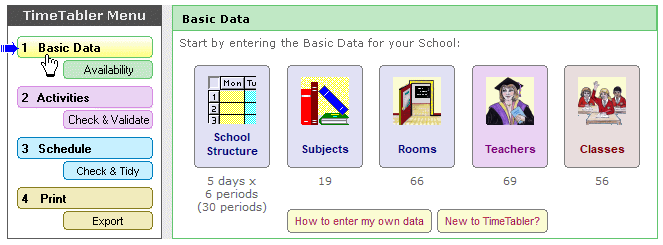
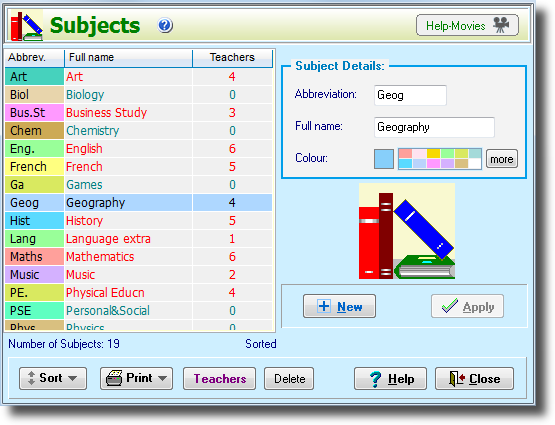
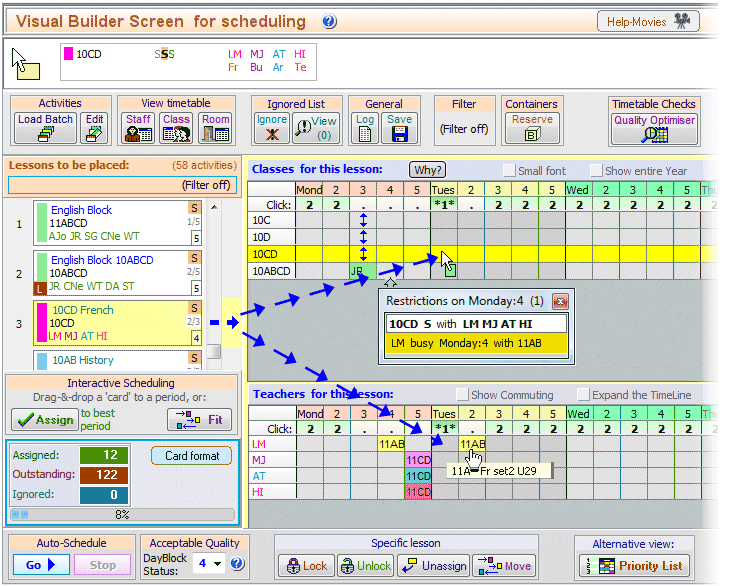

 button.
button.